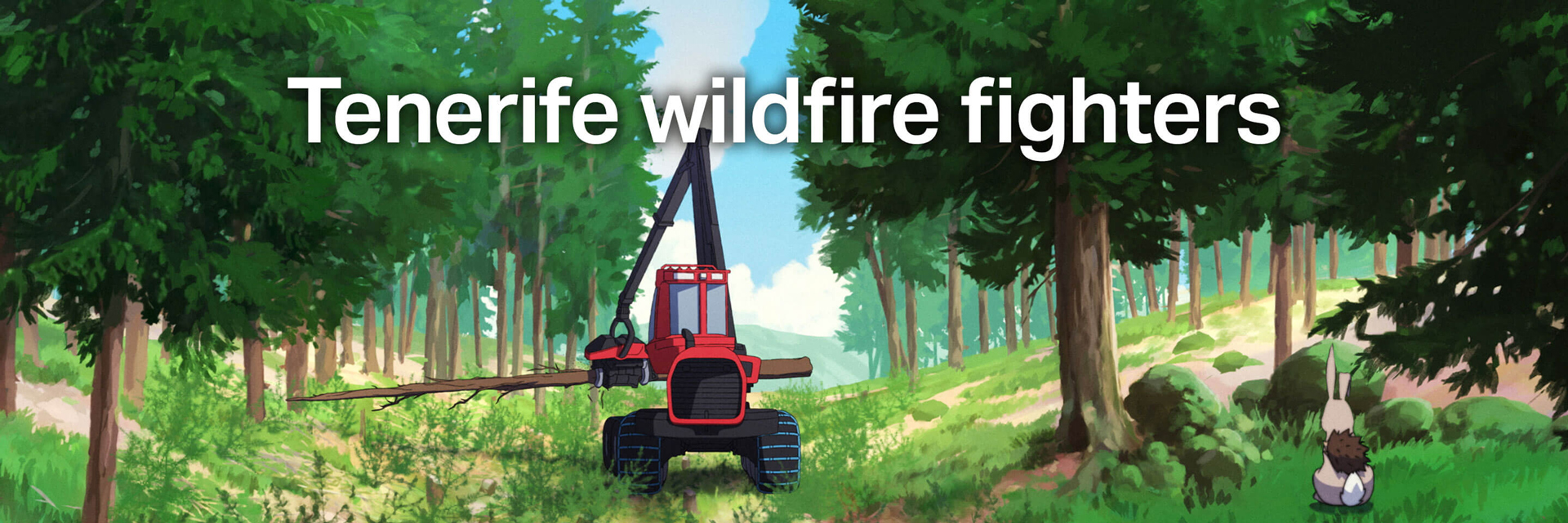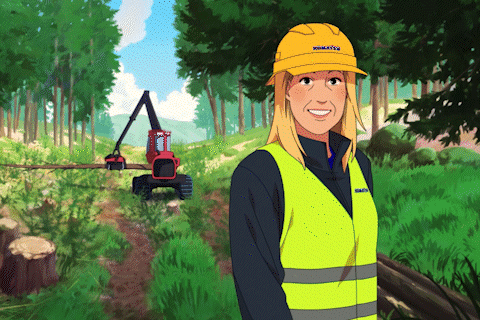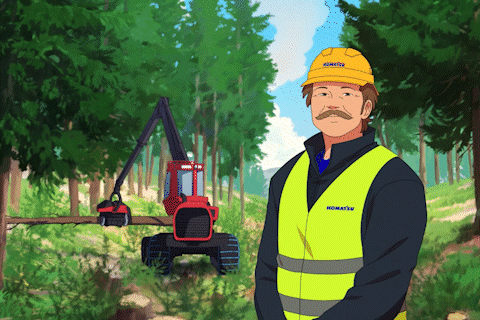

Tenerife, the largest of Spain’s Canary Islands, is a mixture of hot climate and pine forests which creates a paradise highly susceptible to wildfires. Since 2022, Komatsu’s forestry machines have played a key role in helping the local government protect the island’s national parks from these fires. Thanks to the ongoing development of our smart technology, park rangers can plan the work directly from the office. Trees are marked in the field using a tablet, with precision down to the centimeter. Machine operators are able to minimize ground damage by getting the best driving routes to support forest conservation, even receiving operational updates in real time from the office.
Read more in detail about the project and how our Smart Forestry technology can help limit environmental impact while supporting vital conservation efforts.
Learn more about the work to protect wildlife and natural environments through our short anime feature: ‘Stories of gentle giants: Tenerife fire fighters’ below.
Caroline Sigge works as a project manager in one of Komatsu’s many global research and development departments.
Supporting the design of forestry equipment, she manages product development teams, bringing together engineers, hydraulic experts, control system developers and mechanical designers.

Engineers in the R&D department get to try ideas, test them and solve problems on the fly. It’s fast, hands-on and deeply collaborative. The work involves everything from making updates on existing machines to creating new ones from scratch.
“You’re never too new to contribute. We make decisions together, and every voice in the room matters.”


Magnus Wallin is a software developer at Komatsu. Among other things he works on Komatsu’s Smart Forestry Vision software, a GIS-based system that provides real-time information and tools to make forestry work more efficient, precise and sustainable for everyone involved.

In the software department where Magnus works, engineers work on fleet management systems and GIS-based applications that run directly on forest machines — helping operators make smarter, more sustainable decisions in the field. It’s a small, tight-knit team where developers don’t just write code — they design interfaces, prototype features, talk to real users, and see their work tested in the forests by real operators.
“We design our own wireframes, prototype new features, have our own electronics department and handle everything from front-end development to servers.”

